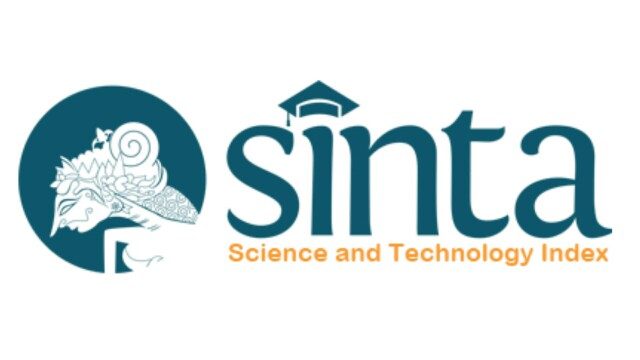ESTIMASI BEBAN PENDINGIN UNTUK GEDUNG HEMAT ENERGI MENGGUNAKAN JARINGAN SARAF TIRUAN
Sari
Kata Kunci
Teks Lengkap:
PDFReferensi
“Para Pengelola Gedung Didorong Lakukan Efisiensi Energi - Nasional Tempo.co,” 2019. [Online]. Available: https://nasional.tempo.co/read/1200821/para-pengelola-gedung-didorong-lakukan-efisiensi-energi. [Accessed: 15-May-2020].
Indonesian Government, “Indonesian Government Law No 79 In 2014 About National Energy Policy,” p. 8, 2014.
Ministry of Energy and Mineral Resources, “Presidential Regulation Number 22 of 2017 on the General Planning for National Energy (RUEN).” 2017.
“Pekerjaan Rumah Pemerintah Untuk Akselerasi Penerapan Konservasi Energi di Indonesia - ICEL,” 2019. [Online]. Available: https://icel.or.id/isu/pekerjaan-rumah-pemerintah-untuk-akselerasi-penerapan-konservasi-energi-di-indonesia/. [Accessed: 31-May-2020].
“Konservasi Energi Nasional Baru Mencapai 9% - Dunia Energi,” 2019. [Online]. Available: https://www.dunia-energi.com/konservasi-energi-nasional-baru-mencapai-9/. [Accessed: 31-May-2020].
Direktorat Konservasi Energi Kementerian ESDM, “Data & Informasi - Konservasi Energi 2018,” p. 61, 2019.
M. K. Alfarizi and E. Prima, “Studi: Bangunan Gedung Hijau Hemat 30-80 Persen Biaya - Tekno Tempo.co,” 21-Feb-2019. [Online]. Available: https://tekno.tempo.co/read/1177826/studi-bangunan-gedung-hijau-hemat-30-80-persen-biaya/full&view=ok. [Accessed: 15-May-2020].
“User Guide For Commercial Sector.” Indonesian Institute for Energy Economics, 2014.
A. Yezioro, B. Dong, and F. Leite, “An applied artificial intelligence approach towards assessing building performance simulation tools,” Energy Build., vol. 40, no. 4, pp. 612–620, Jan. 2008.
D. B. Crawley, J. W. Hand, M. Kummert, and B. T. Griffith, “Contrasting the capabilities of building energy performance simulation programs,” Build. Environ., vol. 43, no. 4, pp. 661–673, Apr. 2008.
B. Dong, C. Cao, and S. E. Lee, “Applying support vector machines to predict building energy consumption in tropical region,” Energy Build., vol. 37, no. 5, pp. 545–553, May 2005.
Q. Li, Q. Meng, J. Cai, H. Yoshino, and A. Mochida, “Applying support vector machine to predict hourly cooling load in the building,” Appl. Energy, vol. 86, no. 10, pp. 2249–2256, Oct. 2009.
T. Catalina, J. Virgone, and E. Blanco, “Development and validation of regression models to predict monthly heating demand for residential buildings,” Energy Build., vol. 40, no. 10, pp. 1825–1832, Jan. 2008.
J. Zhang and F. Haghighat, “Development of Artificial Neural Network based heat convection algorithm for thermal simulation of large rectangular cross-sectional area Earth-to-Air Heat Exchangers,” Energy Build., vol. 42, no. 4, pp. 435–440, Apr. 2010.
W. Pessenlehner and A. Mahdavi, “Building Morphology, Transparence, and Energy Performance,” in Eight International IBPSA Conference, 2003.
M. Kamber, Data Mining : Concepts and Techniques, Second. Elsevier, 2016.
C. Xiao, J. Ye, R. M. Esteves, and C. Rong, “Using Spearman’s correlation coefficients for exploratory data analysis on big dataset,” Concurr. Comput. Pract. Exp., vol. 28, no. 14, pp. 3866–3878, Sep. 2016.
S. Sharma, “Activation Functions in Neural Networks - Towards Data Science,” 2017. [Online]. Available: https://towardsdatascience.com/activation-functions-neural-networks-1cbd9f8d91d6. [Accessed: 05-Jun-2020].
L. Anastasia Kyrykovych, “Deep Neural Networks.” [Online]. Available: https://www.kdnuggets.com/2020/02/deep-neural-networks.html. [Accessed: 05-Jun-2020].
C. Willmott and K. Matsuura, “Advantages of the mean absolute error (MAE) over the root mean square error (RMSE) in assessing average model performance,” Clim. Res., vol. 30, pp. 79–82, Dec. 2005.
A. Xifara and A. Tsanas, “UCI Machine Learning Repository: Energy efficiency Data Set.” [Online]. Available: https://archive.ics.uci.edu/ml/datasets/Energy+efficiency. [Accessed: 04-Jun-2020].
DOI: https://doi.org/10.24176/simet.v11i2.4859
Refbacks
- Saat ini tidak ada refbacks.
Indexed by:





Simetris : Jurnal Teknik Mesin, Elektro dan Ilmu Komputer is licensed under a Creative Commons Attribution-NonCommercial-ShareAlike 4.0 International.
Dedicated to:













